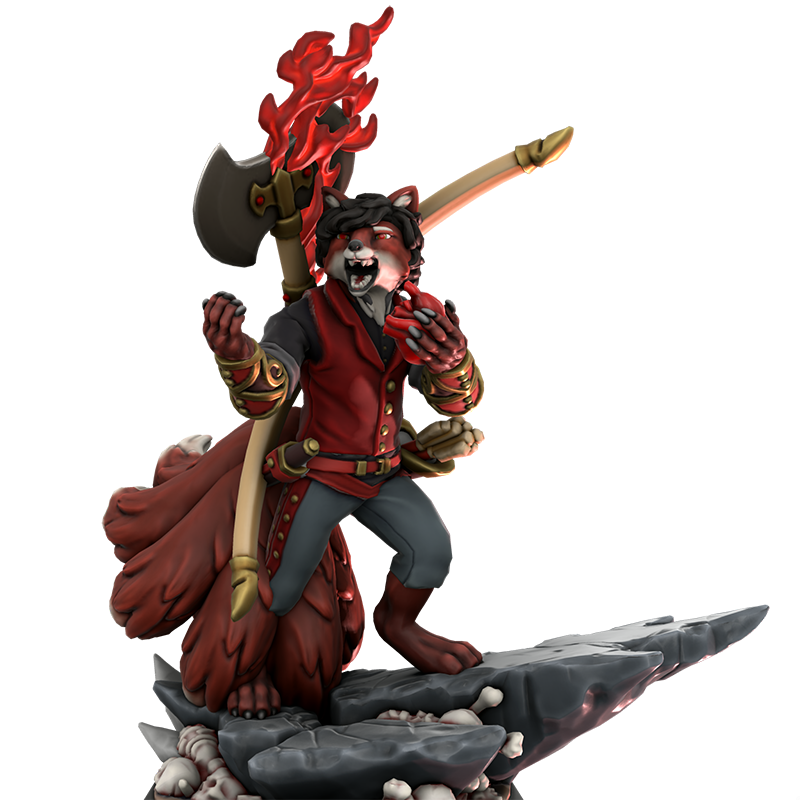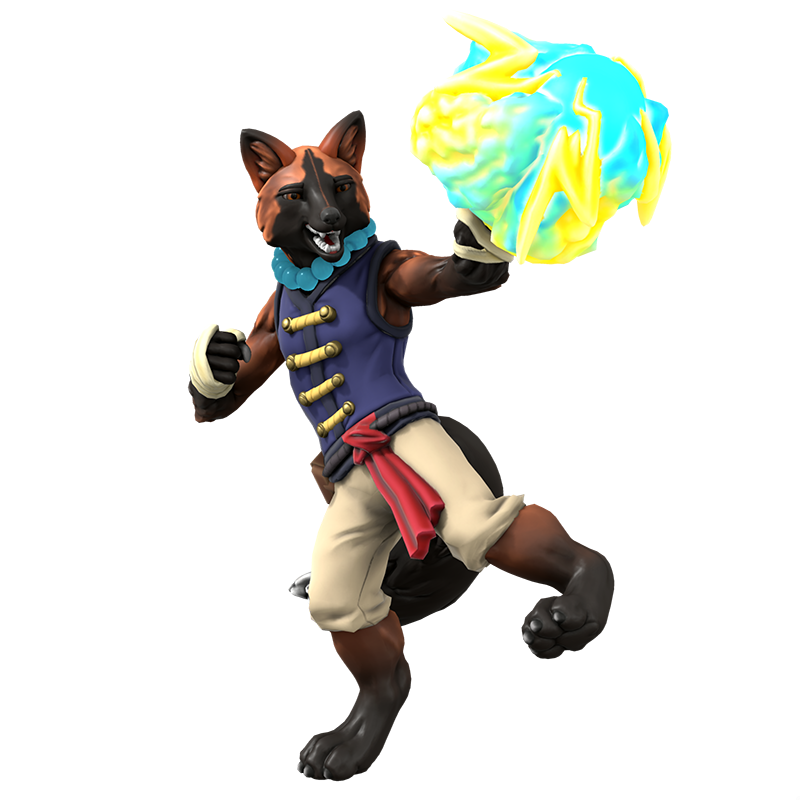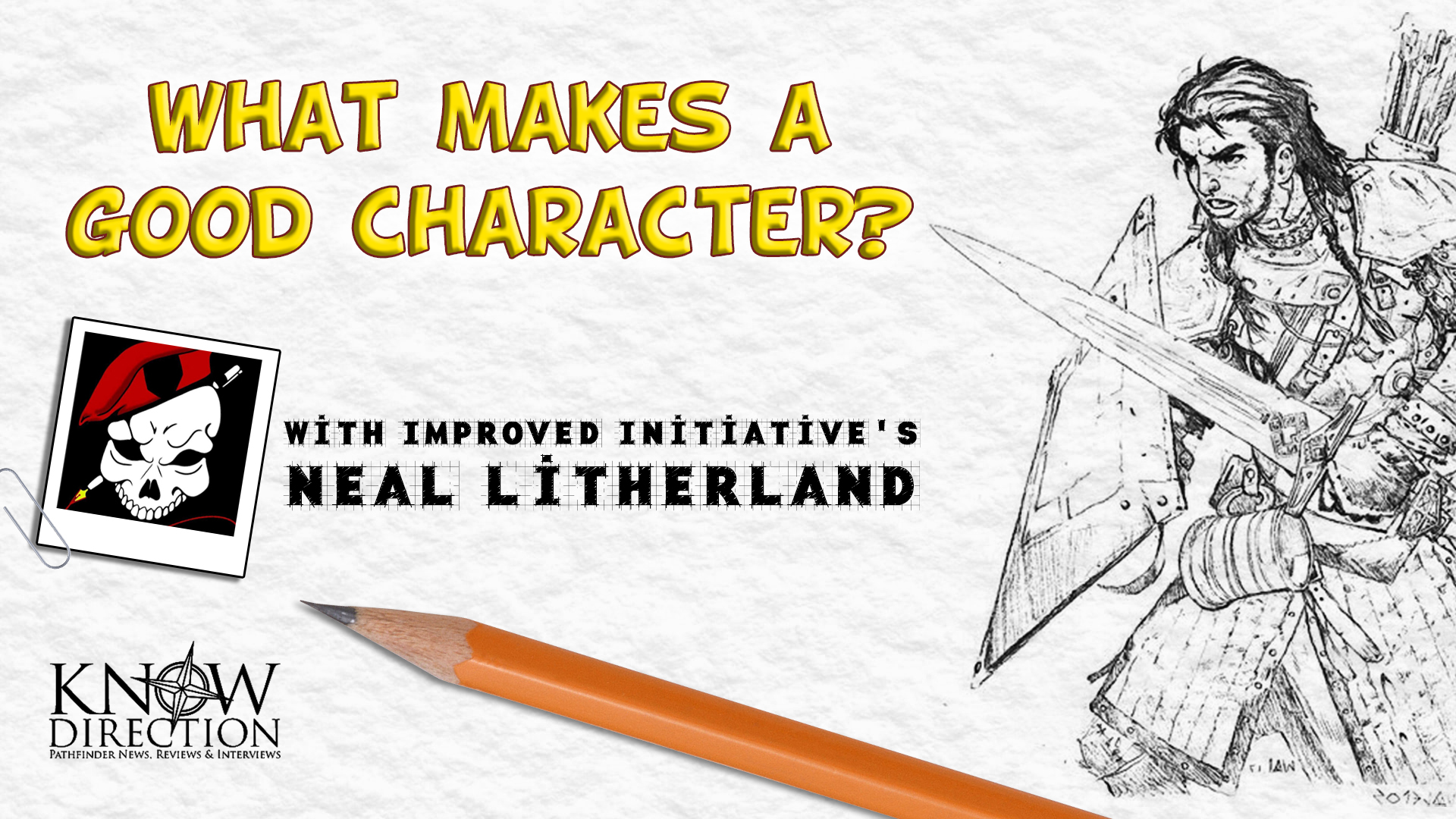Hello, Guidance readers! I’m Alexander Augunas, Know Direction’s Everyman Gamer, and today I’m reviewing my experience with four well-known tabletop RPGS: Pathfinder 1E and 2E, Starfinder, and D&D 5E. Since the start of the quarantine, I’ve found myself in a ton more gaming groups than ever before if only because the advent of Virtual Tabletop has let me do more games without losing time to, say, travel and other things. Currently I’m playing in one Pathfinder 1E game, two Starfinder games, and two 5E games, and am currently getting ready to start my sixth game, a PF2 game.
Playing a whole punch of games side by side by side by side by side by side like this gives one the opportunity to really analyze each game, see what one likes and doesn’t like about each, and draw comparisons and contrasts. With that in mind, here are some thoughts on each of those four games! For every game, I have a boon—something I like about the game—a burst—something that irks me about that game—and a blurb about the games I’m in for each. At the end, I’ll note some comparisons and contrasts about the games. Are you ready? Awesome! Let’s get going.

Hanjae is my Way of the Wicked PC. He’s a shapeshifter bloodline bloodrager with the urban barbarian, primalist, and metamagic rager archetypes. Click for build link.
Pathfinder 1E
Boon — PC Customization
I don’t think any game currently out in the d20 sphere can top Pathfinder 1E in PC customization, since Pathfinder 1E is a game that’s literally about making every little detail about your character your own. Every class feature can be swapped or altered in some way using archetypes, ancestry traits for most of the most popular ancestries can be peddled for new powers like trading cards in a binder, and a feat exists for literally everything. So many powerful, meaningful options existed that I personally needed to have a 20-level plan for every single character I played using Pathfinder 1E because if I didn’t, the sheer amount of options always paralyzed me with indecision. (That’s why I started making my Iconic Design articles!)
While this might be a bust for some people, and indeed it might sound like a bust for me too considering I have to sit down and research builds, I can honestly say that for me the time spent tinkering with character builds is half the fun of the game. It’s like when you play Fallout: New Vegas and take the time to tweak your stats and perks and gear so you fire plasma rifle blasts that instantly goo people. Great times, lots of fun.
Bust — Rocket Tag
The same level of optimization that makes PF1 fun from a playing perspective makes PF1 a headache to GM, in my opinion. While I adored the Strange Aeons adventure path, after completing that game I swore off of GMing PF1 without heavy mathematical and content alterations. My players might say it was James’s impossible-to-hit barbarian (who sported an AC of like 45 by the end of the campaign) that made me quit, but honeslty it wasn’t. It was more the magic, the ease at which individual abilities turned each other on and off in an instant. It broke my heart when our party skald got an ability that gave the entire party ghost touch weapons when he sang because it basically meant that being incorporeal didn’t matter for my monsters anymore. There were tons of little interactions like that which made PF1 a nightmare for me to run personally, and the worst of games involved me handing over my monsters and basically saying, “Okay. We’re done. What next?”
Current Game — Way of the Wicked
Right now I’m playing a game with Know Direction: Beyond’s James Ballod where we’re both players in the 3PP Adventure Path Way of the Wicked. It’s been a lot of fun; my character is a kitsune bloodrager with the primalist, urban barbarian, and metamagic rager archetypes so I basically swapped out half of the bloodrager’s class features for different ones. I have a wide array of magic that is mostly focused on a mix of combat and intrigue (using urban bloodrager to pick of glibness was pretty fun, in my opinion). I’m also the party’s highest AC and I have the best dexterity and most constant accuracy. My build is based on a Korean gumiho, and from using lesser spirit totem to summon a torrent of spirits to attack my phones, rage powers that let me rip people’s hearts out, and spells that let me shapeshift into a bunch of different forms Pathfinder 1E has let me build precisely the PC I wanted for this game. Of course, it also let our friend Robyn build a slayer/barbarian (titan mauler) who dual wields scythes that recently landed two crits on an angel for a total of 500 damage at level 12. That’s like almost a Cthulhu in damage.
D&D 5E
Boon — Simplicity
I was really, really shocked regarding how easy 5E is to play. Like, really shocked. For the most part it feels like Pathfinder 1E with a lot of points of contention filed off. A great example, the game doesn’t really have rules for drawing weapons—you just say you do it and you’ve done it. After a handful of player-focused options the game has enough player options that there’s meaningful choice to be made and the game just sort of feels like it wants me to be successful. Like, advantage and disadvantage is real smooth and the myriad of ways to get advantage really makes the game help you get into the mindset of looking for favorable situations without having guaranteed outcomes.
Bust — Vague Rules
Oftentimes 5E’s fast and loose rules bit it in the butt. When playing with friends, oftentimes I’ll make comments like, “Oh how do I do this?” and no one can tell me, so a house rule needs to be made. A great example using skills. They’ve all only got like a sentence or two, so what’ll usually happen is I’ll say, “Oh how do we do X,” and no one will know because the skills are very rigidly defined but what they can do is not. One common problem I hear from vets is that the game’s systems don’t let you change characters up enough from a level-to-level basis. A good example, I wanted my rogue to take the new soulknife subclass, but until Level 3 I was basically the same as every other rogue in every way. No feats, talents, or fiddly bits to really set me apart. Considering these are my first D&D characters that didn’t bother me, but knowing that complaint and having played Level 1 and Level 2 rogue myself I can certainly see how the Pathfinder side of the fence might seem greener to a 5E fan looking for those things.
Current Game — Abysswalkers and Convergence
I’m actually playing in two home 5E games right now run by two different WoW buddies in my Warcraft community—Abysswalkers is about our attempts to reestablished the lost art of monster hunting while Convergence is about a world where a mysterious new continent emerged from nowhere. Both are super cool and a lot of fun. In Abysswalkers, I’m playing a kobold soulknife rogue named Snarl while in Convergence I’m playing a talbaxi divine soul cleric named Soup for the Soul (goes by Soup). Both characters are about Level 4, and my rogue has gotten his subclass but otherwise doesn’t have a ton of unique powers or abilities to distinguish him from every other rogue in the game. Soup, on the other hand, is very distinct because divine soul sorcerers get to learn spells from the cleric spell list or the sorcerer spell list. One thing I found myself really liking in 5E is its simple spells known system, where you get a limited number of spells per level and just choose any spell you could learn at any level you can cast. I think that’s a really cool, simple system that gives players the freedom to pick the spells they want when they feel it’d be the best time for them to learn them. My rogue also does buckets of damage and his damage is mental damage so almost nothing stops it, making him a blast to play as well. If you play 5E, I highly recommend asking your GM to give you a bonus feat at 1st level from a curated list because it helps give the low-level characters an extra bit of identity. My GM in Convergence did that and I took Chef, so Soup runs around and cooks meals for people outside of combat. Lots of fun!

Asai is my Fly Free or Paizo PC. He’s a kitsune technomancer.
Starfinder
Boon — “Fast and Loose” Flavor
Starfinder, for me, has the perfect combination of simple speed and interesting customization options. It has a strong rules set that’s less complicated than PF1 without being vague in places like 5E. The game has a strong sense of balance, sure, but none of those things are why you pick Starfinder over other games. Starfinder oozes flavor. Literally oozes it. It’s flavor doesn’t permeate many of its rules, but it’s setting is phenomenal and its items in particular do an excellent job of selling the far-flung future. The monsters are the perfect combination of weird, wacky, and horrifying while the classes themselves feel fresh from a thematic perspective, especially once you look beyond the Core Rulebook’s mandatory quartet of mage / cleric / rogue / fighter. Starfinder is a game where you can be a six-armed cuddlebug wielding the power of entropy, a sapient swarm ninja, a robot whose insides are filled with nanobot bees, or just a human dude with a gun, and all those characters make perfect sense in the space western setting Starfinder works tirelessly to establish. Just as kitchen-sink with its sci-fi as its predecessor, Pathfinder, Starfinder somehow manages to weave its disparate parts together into what I find to be the most enjoyable world of any I’ve played with in Tabletop RPGs.
Bust — Monetary Nightmare
For me, Starfinder’s biggest weakness is its equipment. Starfinder has OODLES of equipment, and that’s a good thing. Where it becomes a problem is that characters’ wealth is highly budgeted to the extent that the game basically calculates how much of your money is spent on gear and where. Credits are essentially not really an add-on as it is in all the other games on this list—they’re a point-based character advancement system, similar to how Pathfinder 1E has the Big Six magic items but a lot worse. Like, your armor accounts for easily a third of your wealth at any given level, and baseline the game doesn’t have ways to upgrade or advance your armor. What ends up happening is that characters are essentially forced to spend for the Big Three—armor, weapons, and personal augmentations—then fill in the cracks with any other items they want. And honestly, it kinda sucks when you feel like you HAVE to buy, say, a way to move through three dimensions at Level 5 if you’re melee. Adding to the complication is that a bunch of items don’t feel satisfying to use (I’m looking at you, weapon fusions), are overly limited (I’m looking at you, two magic item slots), or insanely priced (I’m looking at you, medicinals pre-Core Rulebook errata). For me, I think equipment is at its strongest when there’s gear I want but don’t need, and if I decide to spend all my money on cool vehicles and houses then that’s my call. Also, the game (especially Adventure Paths) need to aware more cash, but the cash shortage is an issue that literally all Paizo adventures have. I have never been in a non-Society Paizo game that I felt rewarded my group fairly for our adventures, personally. (Society does great with cash rewards; change your ancestry policies but not your cash policies, please!)
Current Game — Attack of the Swarm!, Fly Free or Paizo, and Teenaged Wasteland
Currently, I’m playing in two Starfinder campaigns (Attack of the Swarm! and Fly Free or Die, which we call Fly Free or Paizo because the game is made up solely of Paizo Editors and freelancers) and running a homebrew game (Teenaged Wasteland). Of all the games on this list, Starfinder is the only game I’m actively GMing so I think that says something about how I feel about the game. In Attack of the Swarm!, which I play with Know Direction: Beyond’s James Ballod, I play Dr. Doctor Raptor, a hanakan medic mystic who hates technology, loves magic, and basically runs around spazzing out over every little military maneuver we do while dispensing healing to the party. I’m a healer connection mystic and I’ve swapped some spells known and other powers for the ability to triage, so when my players are out of Stamina Points my Hit Point healing converts to Stamina for them. My character build is pretty basic, we’re only Level 2 or so, but even at Level 2 my options really make Dr. Raptor stand out compared to everyone else in the party. I can honestly say that no two characters in our game feel mechanically similar, from the vanguard who melts things with her hands to James’s operative who never fails to miss a trick attack.
In Fly Free or Paizo, which I play with Know Direction: Beyond’s Vanessa Hoskins (alongside an all-star cast of names including Leo Glass, Tineke Boleman, Simone D. Salle, Chris S. Sims, and Sol St. John), I play Asai Proudfellow, a kitsune technomancer. Asai had, in my opinion, one of the best character reveals of any character I’ve ever played at a Tabletop RPG table. Without going too deep into, telling you about my character, I played through the first two-thirds of Fly Free or Die as the straight-laced foil to the party. Everyone else REALLY wanted to break away from the corporate hellscape we were in, but Asai from accounting was the voice of EJcorp, reminding people about compliance codes and protocols and consequences for our actions. Everyone thought he was the group stick in the mud until the first time we failed to meet EJcorp’s profit expectations, he willingly took the fall for it and got docked the lion’s share of compliance points (this silly metric that the Company used in our game to measure how compliant we were with their corporate values). Eventually, we got to the point where we were at risk for having our employment terminated and that’s where the big reveal was made—not that Asai was a kitsune (although he did reveal that later at a party), but that Asai’s father was the chief financial officer at EJcorp. Tineke going, “… ooooooooh,” when I told the group that will probably go down in my mind as probably one of the best reactions I’ve ever gotten to any backstory related thing I’ve ever done as a player in a Tabletop RPG.
Finally, Teenaged Wasteland is my semi-homebrew but also kinda canon home game set in Everybody Games and Rogue Genius Games’s campaign setting for Starfinder, Blood Space. Dustin Knight, from Fox’s Cunning, is one of my players. Teenaged Wasteland tells the tale of a group of military academy brats who get thrust into a crazy occultic scenario involving the Devourer, a nogitsune daimyo, and Space Nazis. Lots and lots of Nazis. It’s definitely the best campaign I’ve ever run period, and Starfinder’s zany modern-day scenarios let me play that out in ways I could only dream of in Pathfinder. I’ve done an entire series on anecdotes from Teenaged Wasteland, so check ’em out if you’re interested!

Koji Kishimono is my Adventurous: Troubles in Otari character.
Pathfinder 2E
Boon — Smooth Interactions
I think the cheap answer here is “the Three Action Economy,” which literally everyone says, so I’m gonna not do that and instead pick interactions between abilities as one of my favorite parts of PF2. Like, there’s something really satisfying about the rules saying “Perception DC” and me knowing that just means 10 + the creature’s Perception bonus. Along the same lines, those rules let you do Class Rolls by subtracting 10 from your class DC, which is neat. Most importantly for me, however, is that the game’s standard formula system lets stuff interact in ways that’s just easy. For example, Shove just being an Athletics check against Fortitude DC, or Feint being a Deception check against Will DC. Those are SO easy compared to how they’re calculated in Starfinder and Pathfinder. (I’m looking at you, Starfinder’s obsession with 1-1/2 × CR.) I think that doing Math is a requirement of this game, but Pathfinder 2E really helps you speed that up with rules that are simple, effective, and make sense.
Bust — Nothing Really Matters … To Me …
Pathfinder 2E is a weird beast for me because ultimately, I feel like the vast majority of character options don’t matter. This is a pretty weird, contentious thing to say, I’m aware. The best way I can describe it is that if Pathfinder 1E is Magic the Gathering, Pathfinder 2E is Poker. In a TCG like Magic the Gathering, every card in your deck has an explicit purpose; it’s part of your overall strategy to win the game. The deck as a whole is better for the sum of each individual part. In Poker, the objective of the game is to get the best possible hand, the most high-scoring hand if you will. Pathfinder 1E generally rewards every single choice you make as being an integral part of your character’s deck, an overall boon to your strategy. But in Pathfinder 2E, most options don’t interact with each other. Skill feats generally don’t intersect with combat save for niche examples like anything involving Demoralize or Battle Medicine (which is why those two feat chains are generally the most commonly selected skill feats), and class feats generally don’t intersect with each other unless they directly require one another as prerequisites. In my experience, feats don’t really compound on each other as much as your actions themselves do. Like you’ll want Action B to follow up on Action A, and the combo of actions you used is where the character building comes from just like how your hand in a game of Poker are the only cards in the deck that matter at any given point in time. I personally don’t like this. I don’t care for the design that tells me that some of my options aren’t really doing anything at any given point by design intent rather my personal intent, and I don’t like that you really have to stretch to get options to connect with each other. I think the first character I ever really managed to get a taste of what I loved about character building from 1E in 2E was Laychatte, my catfolk gunslinger from our Guns and Gears playtest episode.
Currently, I don’t have any 2E on my docket beyond what we’re doing with KD Plays, which is Adventurous: Troubles in Otari. In TiO, I play Koji Kishimono, a 14 year-old kitsune monk out for adventure with his older brother, Kuro Kishimono (played by Dustin Knight) and mentor, The Professor (played by Jefferson Jay Thacker). In that game, Koji also gave me a hint of option interplay that I love in 1E and in Starfinder in that Koji’s Foxfire feat counts as an unarmed strike, so I can unleash a flurry of electric blasts. Then again, I also got pretty frustrated with the kitsune rules when I realized just how bad using Change Shape to transform into a fox debuffs me, so there’s that too. That’s another thing I’m not crazy about with PF2—as a designer for PF1, I was close enough to the meta that I can look at specific design decisions in PF2 and immediately see them as heavy-handed attempts to cut out popular PF1 rules exploits, like how Pest Form basically exists as-is to ensure that the songbird playstyle from PF1 never happens again (this is why turning into a fox is objectively bad in PF2). Maybe I’m jaded, but I see the majority of feats not really syncing together well without GameMastery Guide rules like free archetype being put in place and countless examples of overreactions to PF1, and it kinda kills my mood on PF2. I don’t hate the game, but I don’t really get pumped to play it. I’m hoping that Dustin Knight can change my mind on that, however, as he’s invited me to play in a firefighting homebrew game this fall after Secrets of Magic is released, which I plan to accept. I haven’t decided 100% on a character yet, but right now I’m leaning towards a fire-based spellcaster of some kind so I can literally fight fire with fire by using controlled burns to destroy nearby structures that would fuel the fires we’re fighting. I hope to report more on this later, as both Guns and Gears and Secrets of Magic definitely look like they’ll be upping the ante for PF2 in terms of power and complexity, and as many others have said there’s a serious power creep in the ancestry options of the new Lost Omens: Mwangi Expanse book, so I’m hoping this means that Paizo’s heard feedback that their player options are kinda underwhelming in many places and is iterating and improving upon that. It’s tough to make changes to a pen and paper game—can’t issue hot fixes like video game developers do, after all—but I have faith that Paizo will bring Pathfinder to a point where it’s balanced but still feels fun to play. For me, it’s just not there yet.
Compare, Contrast, and Conclude
So, now that I’ve told you about each of these games, what are my thoughts about the set? Glad you asked!
- Starfinder’s my favorite of them. I feel it’s the simplest game with the most meaningful choices. However, I’m super biased here because more than anything else I love the sci-fi future setting of Starfinder. It’s such a breath of fresh air compared to the trope-ridden minefield of fantasy settings, even considering how much I like Pathfinder’s setting. (And honestly, I think most of D&D’s settings are boring because they haven’t really grown them all that much since 3.5 D&D.)
- I don’t think PF2’s 3-action economy is really as revolutionary as the game makes it out to be, if only because the game balances the power of an action so heavily. Like, my 5E sorcerer, Soup, basically has three actions. I can move, I can do whatever I want with my action. That is, at its core, the same as a spellcaster in PF2. Like sure, in PF2 if I wanted to do anything other than cast a spell I could do one more thing and PF2 certainly makes it easier to move more than D&D 5E, but when you compare move and cast a spell in PF2 to move and cast a spell in 5E, turns basically look the same. Except in 5E, my sorcerer can spend his sorcery points to cast a second spell as a bonus action using Quicken Spell, so 5E kinda wins out there. 5E is ABSOLUTELY kinder to spellcasters, even at early levels. Moreover, my rogue basically has four actions compared to the PF2 rogue. Snarl can use his movement, he has a standard action, and Cunning Action lets him take a bonus action from among Dash, Hide, or Disengage. If I attack, my soulknife special ability lets me make two attacks with my soul blades as if I was two-weapon fighting. In short, I don’t think PF2 actually gives you more actions than 5E, I think how you spend those actions are freer than 5E. But in many cases, your actions per round look the same between games, especially if you’re a spellcaster.
- There are a lot of rules that 5E just drops and nobody really misses them. Like, sometimes someone stops and says, “What do I have to do to draw a weapon? and no one’s really sure because the game kinda doesn’t have rules for it, but it’s also very freeing when some of the nitty gritty rules are just dropped in favor of what’s cool in the moment. In every other game on this list, I’ve had players who’ve told me that they walk around, weapons drawn and out, because it’s so harmful for weapon-based characters to have to use their first round getting weapons out. 5E is kinda like, “Nah, don’t worry about it.” I think that being as vague as 5E often is on the nitty gritty isn’t great, but I also think that sometimes 5E does a good job of showing us what rules need to go away because they serve no narrative purpose other than to make fights take a little bit longer.
- When I play 5E, I really miss how the -Finder games have actual rewards that you want to spend money on. Like we earn all this gold in 5E and no one is really sure what to do with it other than buy healing potions and the like. I think Starfinder’s economy and how it affects player power is a little much, but 5E is too little. Of all the games, I think PF2 probably has the best balance here, if only because the game has rules in place that limits the number of powerful items you can benefit from at a time, which means that you can feel better about buying a Malibu Beach Dreamhouse or whatever you want instead. You absolutely cannot do that in Starfinder, which is a problem because the vast majority of your money going to gear is in direct conflict with how we know a relatively modern capitalist society works. Starfinder REALLY needs real estate and housing rules, and honestly needs them more than it needed starships in my opinion.
- Still don’t want to GM PF1. It’s a blast to play if you’re playing with a GM who can roll with endgame punches, but that ain’t me. And the amount of changes you’d need to make to make it work is insane.
- Starfinder has the best monster creation rules, hands down. Monster creation kinda doesn’t exist in 5E; most GMs I see just reflavor Monster Manuel baddies. PF1 is very obtuse with a ton of secrets that you really only learn by studying Adam Daigle podcasts from PaizoCon, and PF2 is a little better but not much. PF2’s rules are like someone looked at Starfinder’s and said, “Nah, that’s too rigid. LOOSEY GOOSEY BABY!” But honestly? Monsters survive for like one fight. Let them be rigid and menu-oriented because they’re gonna die fast. I think speed is more important than expression when it comes to GMs making monsters, and you can literally sit down and play a Starfinder monster off of an array table in the back of Alien Archive 1. That’s a win in my opinion.
- All four games are excellent at capturing the imagination and fantasy of a tabletop RPG world. I love playing with my friends in all four games; I’ve had hilarious and awe-inspiring RP moments in each of them, from when Asai accidentally got drunk and reverted from his human form to his kitsune form for the first time in Fly Free or Paizo, or when Evelynn had to flee from Leon’s little sister in a Rogue One style flight from Darth Vadar in Teenaged Wasteland, or Hanjae and Schnicktug’s absolute domination of a small-scale thieves guild in Way of the Wicked, or Koji’s constant shouting of his special attacks in Troubles in Otari. I’ve had legit fun in every one of these games and all four are great experiences in my opinion. Of course, as a human being with a limited amount of time on this Earth, I have to choose how to spend my time and overwhelmingly that time is with Starfinder.
Well, I hope you’ve enjoyed my little retrospection! Do you play two or games from this list? I’d love to hear what you think about them on the Know Direction Network’s Discord. Until next time, I’m Alex Augunas and I’m signing out!






